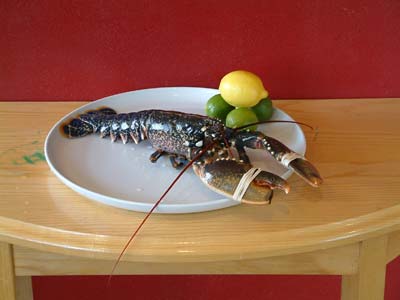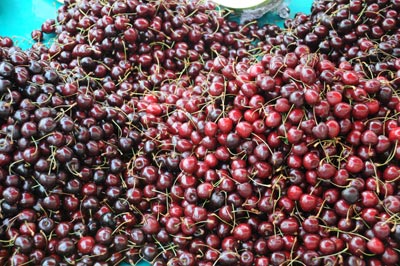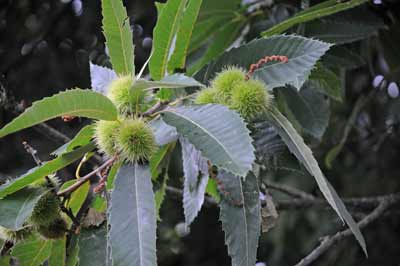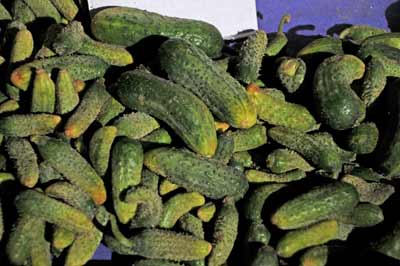Corkwing. A type of wrasse, a small, bony, marine fish (up to 15 cm (1 ft) in length) which is good in soups. The largest is the peacock wrasse. It is also a thrush.

A name for lobster in Brittany. The European lobster is a large, marine shellfish with huge claws and is dark, mottled blue-black before cooking, turning red during the process. The flesh is sweet and tender. The Maine or American lobster found in the United States is huge in size and lacks the wonderful sweetness of its European cousin. American varieties may sometimes be brick red before cooking. In Europe they are likely to up to 2 kg (4¼ lbs) while North American ones may be a lot larger. Increasingly, American lobsters are imported for use in Europe.

There are over 150 varieties of cherry. Sweet (dessert) cherries are eaten fresh. The flesh is soft and very juicy or firm and moist. Skin colour ranges from pale yellow to near black and they can be almost heart-shaped. Acid (sour or culinary) cherries, of which Morello is one, are used for cooking, bottling and jam (US: jelly) making. The flesh may be white, pink or red. Duke cherries are a cross between the two and have juicy flesh. Montmorency indicates their presence in a dish.

Sweet chestnut. Smaller than marron. To peel chestnuts the hard outer skins need to be slit and then the chestnuts roasted or grilled until these skins crack. They can then be peeled off and the chestnuts boiled for ten minutes, after which it should be relatively easy to rub off the inner, papery brown skin.

Basil. An aromatic plant of the mint family with white flowers which probably originated in India. The leaves are generally light green and have a strong flavour of lemon and jasmine, liquorice and cloves and a warm, spicy smell. It is particularly good with tomatoes. Only use at the last moment, to enhance the flavour.

Gherkins (US: dill pickle). A tiny, sour cucumber pickle in vinegar.